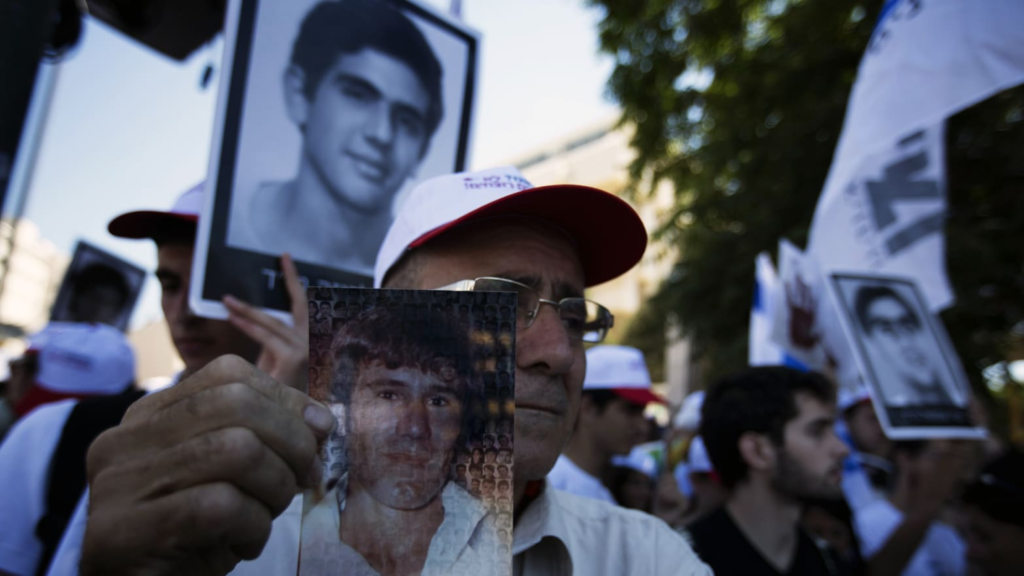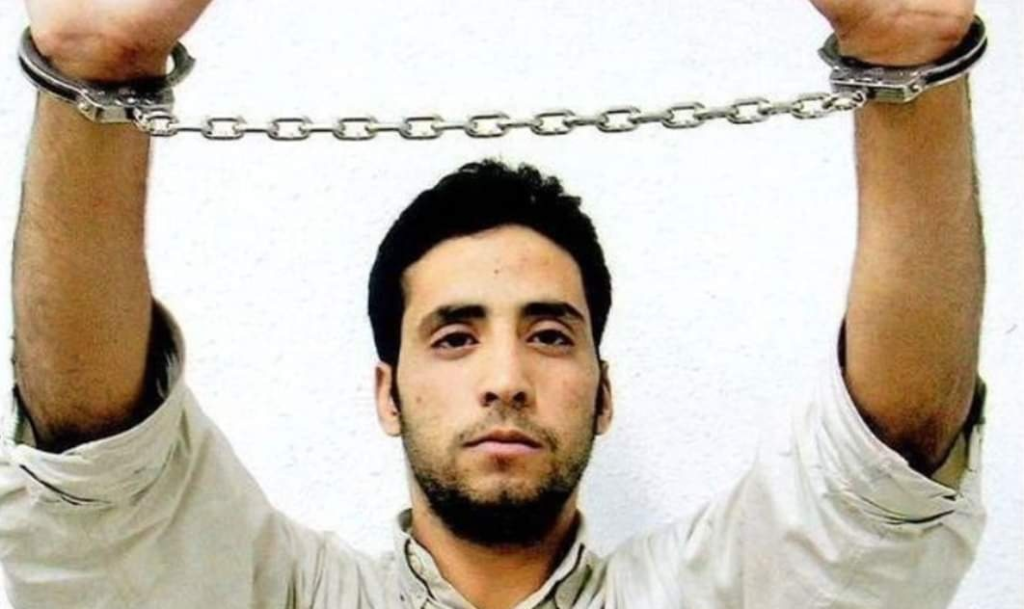Aziz Salha, Man Who Became Infamous for Waving Bloodied Hands After Killing 2 Israeli Soldiers Killed in Gaza – a notorious figure linked to one of the most horrific events of the Second Intifada, has been killed in an Israeli airstrike in Gaza.
Aziz Salha’s name became infamous after he participated in the lynching of two Israeli soldiers in Ramallah in 2000, and was later photographed waving his bloodied hands from a window following the brutal killings. His death marks a significant moment in the ongoing Israeli military campaign in Gaza.
The Israel Defense Forces (IDF) confirmed Aziz Salha’s death in a targeted airstrike in Deir El Balah, located in the central Gaza Strip. The 43-year-old, who was originally from Dayr Jarir, had become a symbol of Palestinian violence during the Second Intifada, and his image remains etched in Israeli collective memory. Salha’s death comes amid increased Israeli military activity in Gaza, following Hamas’s attacks on Israel in October.
The Infamous Lynching of 2000
Aziz Salha became a central figure in one of the most shocking incidents of the Second Intifada when he and other Palestinians lynched two Israeli soldiers, Sergeant First Class (Res.) Yosef Avrahami and Corporal (Res.) Vadim Norzhich, on October 12, 2000, in Ramallah.
Read : IDF Shares Video of Gaza Tunnel Where Hostages Were Kept and Killed by Hamas: Watch
The two soldiers had mistakenly entered Ramallah, which was under Palestinian control at the time, and were attacked by a mob after being taken into custody by Palestinian police.
The brutal killing was captured in a photograph that quickly spread across the world. The image of Salha standing in a window, holding his bloodied hands aloft in a gruesome gesture of victory, became a symbol of the violence and chaos that defined the Second Intifada. The lynching was condemned internationally and further inflamed tensions between Israelis and Palestinians.

Salha was apprehended shortly after the incident in 2001 and sentenced to life in prison for his role in the killings. However, he was released as part of the Gilad Shalit prisoner exchange deal in 2011, where over 1,000 Palestinian prisoners were freed in exchange for the Israeli soldier captured by Hamas. Aziz Salha was among those deported to the Gaza Strip as part of the agreement.
Salha’s Role in Gaza and His Death
Following his release, Salha became an influential figure within Gaza, aligning himself with Hamas and continuing his involvement in militant activities. According to the IDF, Aziz Salha’s presence in Gaza made him a legitimate military target due to his past actions and continued involvement with terrorist organizations.
In a targeted operation, the IDF successfully struck Salha in Deir El Balah, where he had been residing since his deportation. His death was part of a broader Israeli military campaign aimed at neutralizing key Hamas figures and dismantling its network of operatives.
The IDF also confirmed the destruction of a “network of underground tunnel routes” used by Hamas for smuggling and operations, underscoring the intensity of the military operations in Gaza.

Salha’s death is a significant victory for Israel, not only because of his infamous role in the 2000 lynching but also due to his ongoing involvement with Hamas’s military activities.
His presence in Gaza, like many former prisoners released in exchange deals, had long been a source of contention within Israeli security circles. The assassination of key figures like Aziz Salha serves to weaken Hamas’s leadership and diminish its ability to carry out coordinated attacks against Israel.
Broader Israeli Operations and the Death Toll in Gaza
Aziz Salha’s killing is just one of many in recent months, as Israel continues its military campaign against Hamas in Gaza. According to the IDF, over 450 Hamas terrorists have been killed through airstrikes and close-quarters combat since the conflict erupted in early October.
These figures reflect the scale of Israel’s ongoing efforts to dismantle Hamas’s military infrastructure and neutralize its leadership.
The IDF also revealed that it had located and destroyed an extensive tunnel network in Gaza, stretching approximately eight kilometers. These tunnels, often referred to as “terror tunnels,” are critical to Hamas’s operational strategy, allowing its fighters to move undetected, store weapons, and launch attacks against Israeli forces.

In addition to targeting individuals, the IDF has also attacked several former school buildings in Gaza that had been repurposed as Hamas command and control centers. This tactic is part of Israel’s broader strategy to dismantle Hamas’s ability to coordinate and communicate during the ongoing conflict.
An Israeli official told The Telegraph that since Hamas launched its attack on Israel on October 7, approximately 20,000 of its members have been killed. These figures highlight the intense and sustained military operations conducted by Israel in Gaza, which have significantly weakened Hamas’s fighting capacity.
A Shift in Focus: Israeli Forces Relocate to the North
While Gaza remains a hotbed of conflict, Israeli forces have begun shifting their attention to the north, where another war is brewing with Hezbollah in Lebanon. Most of the Israeli forces previously stationed in Gaza have been redeployed to the northern front, as tensions with Hezbollah have escalated in recent weeks.
This shift in focus marks a new phase in Israel’s military strategy, as it seeks to address threats on multiple fronts. Hezbollah, much like Hamas, is an Iranian-backed militant group with extensive military capabilities, and the ongoing conflict between Israel and Hezbollah has the potential to ignite a broader regional war.
As Israeli forces move to the north, the situation in Gaza remains fluid, with airstrikes and targeted operations continuing. The death of figures like Aziz Salha and other senior Hamas leaders signals Israel’s determination to dismantle Hamas’s leadership and weaken its operational capabilities. However, with tensions running high on multiple fronts, the conflict shows no signs of abating in the near future.

The death of Aziz Salha, a figure infamous for his role in the lynching of two Israeli soldiers during the Second Intifada, represents a significant moment in Israel’s ongoing military campaign in Gaza.
Aziz Salha’s bloodied hands waving from a Ramallah window became a symbol of the brutal violence of that era, and his death serves as a reminder of the long-standing animosities between Israelis and Palestinians.
His killing, along with that of other senior Hamas figures, highlights the intensity of the conflict as Israel continues to target key leaders within the militant group.
As the situation in Gaza evolves, Israel’s military operations show no signs of slowing down, and the death toll continues to rise. With the Israeli forces shifting focus to confront Hezbollah in the north, the conflict in the region remains unpredictable.
However, the death of Aziz Salha underscores the importance of leadership figures in these militant organizations and how their elimination can impact the trajectory of the conflict.
let’s enjoy few years on earth with peace and happiness….✍🏼🙏

